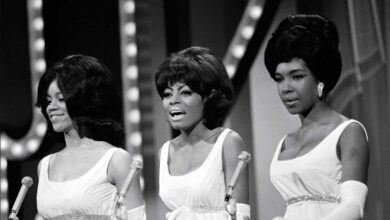Roy Orbison’s “Only the Lonely” and Its Haunting Resonance in 1960
When Roy Orbison released “Only the Lonely” in 1960, it marked a defining moment in the landscape of popular music. With its ethereal vocals and lush orchestration, the song soared to number two on the Billboard Hot 100 and became a transatlantic success, topping the UK Singles Chart. Unlike the conventional rock and roll hits of the time, “Only the Lonely” introduced a striking vulnerability that resonated deeply with listeners. Orbison’s operatic delivery and heart-wrenching narrative established him as one of the most emotive voices in modern music.
Born in Vernon, Texas, Orbison’s musical journey was shaped by a blend of country, rockabilly, and rhythm and blues. His early career with Sun Records placed him among rock and roll pioneers like Elvis Presley and Johnny Cash, but Orbison’s path diverged. While his contemporaries exuded a rebellious energy, Orbison leaned into emotional storytelling. His signature vocal style, characterized by its dramatic range and trembling sincerity, set him apart. By 1960, Orbison had signed with Monument Records, where he found the creative freedom to explore his unique sound.
“Only the Lonely” was a product of this newfound artistic freedom. Co-written by Orbison and his frequent collaborator Joe Melson, the song was initially pitched to artists like Elvis Presley and The Everly Brothers. When they passed on it, Orbison decided to record it himself. The decision proved fortuitous. Drawing from personal experiences of heartbreak and isolation, Orbison infused every note with palpable emotion. The song’s narrative of unrequited love was not merely a performance — it was a reflection of Orbison’s own vulnerabilities.
The recording sessions at RCA Studio B in Nashville were led by producer Fred Foster, who recognized the power of Orbison’s voice. The arrangement was meticulously crafted, with a sweeping string section that elevated the emotional intensity of the track. Unlike traditional rock and roll productions, Foster opted for a restrained yet dramatic approach, allowing Orbison’s voice to take center stage. The result was a sonic masterpiece that balanced delicate melancholy with operatic grandeur.
Upon its release, “Only the Lonely” captivated audiences and critics alike. Its unconventional sound defied industry norms, offering listeners a raw and intimate portrayal of heartache. The song’s success was not confined to the United States; it topped charts worldwide and earned Orbison international recognition. Beyond its commercial triumph, “Only the Lonely” marked a cultural shift, proving that vulnerability and emotional honesty could resonate just as powerfully as upbeat, rebellious anthems.
For Orbison, the song’s success opened new doors. It established him as a leading voice in the emerging genre of pop ballads, earning him comparisons to classical tenors for his vocal range and emotive delivery. Throughout the early 1960s, Orbison continued to release a string of hits, but “Only the Lonely” remained a career-defining achievement. It showcased his ability to transcend genres, blending rock, pop, and classical influences into a sound uniquely his own.
The song’s influence also extended beyond Orbison’s career. Many artists, including Bruce Springsteen and Chris Isaak, have credited Orbison’s emotive storytelling and dramatic vocal style as inspirations. “Only the Lonely” set a precedent for balladry in rock music, paving the way for emotionally charged performances that prioritized narrative depth. Its orchestral arrangement further demonstrated the potential of pop music as a sophisticated, layered art form.
Numerous covers and renditions of “Only the Lonely” have emerged over the years, each paying homage to Orbison’s original masterpiece. Artists like Glen Campbell and Don McLean offered their interpretations, though few could match the haunting sincerity of Orbison’s performance. The song also found renewed life in film and television, where its poignant melody has underscored moments of heartbreak and reflection.
Despite the personal challenges Orbison faced in the years following the song’s release, including the tragic loss of his wife and children, his music remained a source of solace and strength. “Only the Lonely” endured as a reflection of Orbison’s resilience, its enduring popularity a testament to its emotional truth. In 1999, the song was inducted into the Grammy Hall of Fame, further cementing its status as one of the greatest recordings of all time.
Looking back, the legacy of “Only the Lonely” is one of emotional resonance and artistic courage. Orbison’s willingness to embrace vulnerability and channel his pain into his music broke barriers and reshaped the expectations of male performers in popular music. While countless songs have explored themes of heartache, few have captured the sheer loneliness and longing as powerfully as Orbison did.
“Only the Lonely” stands as a timeless reminder of the human experience — the ache of lost love, the yearning for connection, and the strength found in facing sorrow. Through his unparalleled voice and fearless emotional expression, Roy Orbison not only changed the sound of popular music but also gave listeners permission to feel, mourn, and find beauty in the pain. Decades later, his voice still echoes, a haunting testament to the song’s enduring power.



